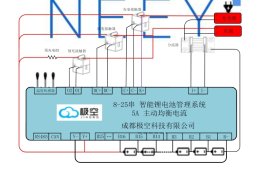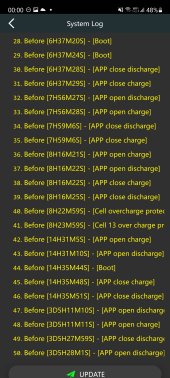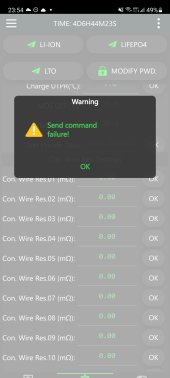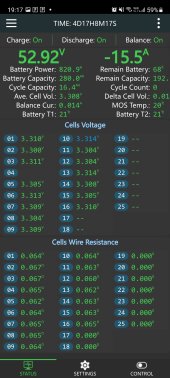Hi!
Currently doing testing and trying to get my new 16S EVE LF280K battery working.
In the start everything was working as intended. Got balance current up to 2 A and system was charging with a low 30 A.
Turned off the balancing for much of the charging as it was not really needed. As I was approcing 3.35 V per cell i turned it on again, only this time there was only A very tiny balancing current. 20 mA or so. As I got to top of charge, a couple of the cells started to shoot up in voltage and tripped the over voltage protection at 3.6 V.
I figured i might as well restart the BMS and see if I could get the BMS to do the top balancing.
However, when I disconnected the BMS and connected it again, it no longer recognice the balancing leads.
All leads show 0 ohm and I get an alarm for high balancing lead resistance. I have checked the connections and they look ok.
Anyone have had similar issues with the JK BMS or JK balancer?
I have a B2A25S60p. This uses external relays.
Currently doing testing and trying to get my new 16S EVE LF280K battery working.
In the start everything was working as intended. Got balance current up to 2 A and system was charging with a low 30 A.
Turned off the balancing for much of the charging as it was not really needed. As I was approcing 3.35 V per cell i turned it on again, only this time there was only A very tiny balancing current. 20 mA or so. As I got to top of charge, a couple of the cells started to shoot up in voltage and tripped the over voltage protection at 3.6 V.
I figured i might as well restart the BMS and see if I could get the BMS to do the top balancing.
However, when I disconnected the BMS and connected it again, it no longer recognice the balancing leads.
All leads show 0 ohm and I get an alarm for high balancing lead resistance. I have checked the connections and they look ok.
Anyone have had similar issues with the JK BMS or JK balancer?
I have a B2A25S60p. This uses external relays.









